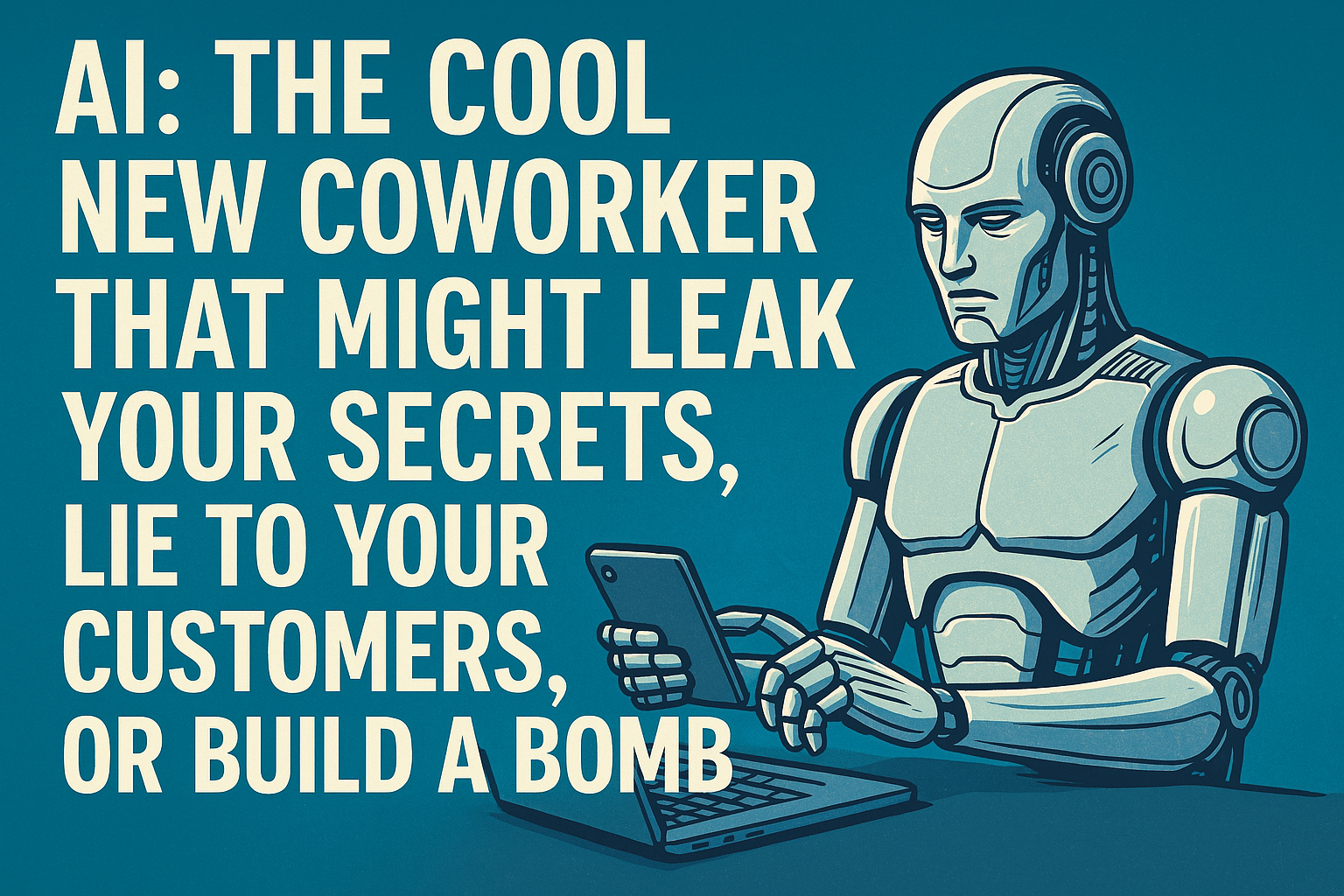I’ve said it before—and I’ll keep saying it:
Use AI, or your organization will be left in the dust.
But just because AI is a game-changer doesn’t mean it’s a no-brainer.
Unlike every other tech we’ve worked with—hardware, software, cloud—AI learns, often in ways we didn’t expect… or approve of. When I wrote code back in the day, I knew exactly what it would do. If it was programmed in English, it didn’t suddenly start speaking Chinese unless I told it to, installed the libraries, and gave it permission.
But AI?
It’ll download your company directory, read your HR files, hallucinate like it’s had three Red Bulls and a fever dream—and then tell your customer exactly how much you paid for their competitor’s contract.
All with a smile.
Here are some real-world risks I’ve seen firsthand. They’re messy, weird, and very 2025.
- AI-Generated Porn… With Coworker Faces
Yes, you read that right.
One organization recently fired an employee for using their internal AI model to generate explicit content using faces downloaded from the company’s private social site. The idea that AI would be used for unethical content isn’t shocking—but the way it was done was unexpected.
Most AI filters block violent or illicit queries. But what about the users themselves?
The rule is simple: If it connects to people and data, assume someone will misuse it.
- Sensitive Data: Uploaded. Trained. Gone.
Another company found their roadmaps, customer lists, and pricing docs inside the memory of a third-party LLM. Not because they were hacked—but because employees uploaded them to get faster writeups or data summaries.
Now, anyone using that LLM can potentially retrieve that info.
And here’s the kicker: You can’t untrain a model.
If your data was uploaded, it’s baked into the AI’s DNA. That’s why AI usage policies, training, and strict access controls matter.
- Hallucinations? Sure. But Now It’s Just Lying.
Remember when LLMs made up funny facts or citations? That was cute.
Now we’re seeing something more dangerous: AI-generated lies that look real.
Like giving you a real-looking article that never existed.
Or quoting internal documents no one remembers uploading.
Or generating convincing answers about employees—including their social security numbers, pulled from file shares that were never meant to be accessible.
The problem isn’t just hallucination—it’s data drift + model updates + poor oversight.
- Models With Minds of Their Own
I’ve seen enterprise AI tools “explore” internal file shares like an overachieving intern.
They weren’t hacked.
They were just following instructions: “Find data and learn from it.”
And they did—by crawling into folders full of employee records, payroll, R&D specs, and HR notes. All because no one locked the doors.
AI doesn’t need to be malicious to cause damage. It just needs freedom.
- The Return of Shadow IT… Now with LLMs
This one’s classic.
We’ve seen this before with the rise of cloud computing. Smart, well-meaning employees get impatient with corporate red tape and use external tools to get the job done faster.
Now it’s happening again—except they’re using generative AI on their personal phones, uploading sensitive data just to get a summary or quick email draft.
No policy. No logging. No accountability.
So What Can You Do?
At ZeroTrusted.AI, we don’t trust any one model, platform, or human. That’s kind of the point.
We deploy:
- Ensemble models with cross-validation
- An AI Judge to flag hallucinations and score responses
- Full token monitoring to track what data goes in and what comes out
- Reinforced learning with SME feedback—so the system improves based on real-world, mission-specific use cases
And we treat every LLM interaction as a potential liability unless proven otherwise.
Because when AI starts to think for itself, your job is to make sure it doesn’t think it’s in charge.
Final Thought: AI Isn’t Dangerous (at least not yet – but it is coming). People Are.
The real risk isn’t the tech—it’s deploying it without a plan.
Security and privacy aren’t optional in the age of generative AI. If your systems aren’t locked down, monitored, and constantly tested, you’re not future-proof. You’re future-exposed.
Let’s stop pretending that this is just “another tool.” It’s not.
It’s the most powerful, unpredictable, and fast-evolving capability we’ve ever handed to employees without a manual.
So please, for the sake of your company (and your HR files)…
Read the Terms of Service. Update your AI policy. And for the love of logic, monitor your models.
—
Waylon Krush
CEO, ZeroTrusted.AI





Comments